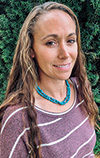We’re fully into spring season by the month of May, and many operations are kicking out bulls or possibly preparing to artificially breed their herds, specifically potential replacement heifers. Often, the initial decision to retain a heifer takes place in the fall following weaning, and the process of heifer development begins. Ideally, at around 12 months old, potential replacement heifers have been provided quality nutrition and would be ready for further evaluation 30 to 60 days prior to breeding. By evaluating this far in advance, heifers that pass the evaluation can be given pre-breeding modified-live vaccines, plus receive a booster in time for reaching full puberty around 14 months old.
Keep in mind that while nutrition is critical in heifer development, breed and genetics play a role in age of onset of puberty, so variations between herds is to be expected and reproductive evaluation may need to be scheduled closer to 13 or 14 months old. The other advantage of this evaluation timing is that heifers with small pelvises or underdeveloped reproductive tracts can be culled, a practice that in the long run will help improve reproductive efficiency of a herd with increased rates of conception at first service. Additionally, by being prepared to cull at this time, an operation then has the opportunity to save on additional input costs such as labor services, vaccinations, hormones and feed.
Because age of puberty can be difficult to measure directly, reproductive tract scoring (RTS) can be performed to evaluate reproductive tract development. This measurement involves rectally palpating the reproductive tract and assigning a score of 1 to 5, with 1 indicating an immature, prepubertal heifer and 5 indicating a cycling heifer with a well-developed uterus and ovaries.
While there are a number of factors that come into play in a heifer experiencing dystocia, pelvic area can be a major contributor to the occurrence. A pelvic measurement can be taken on the heifer and then factored in to estimate the birthweight of a calf she can successfully deliver unassisted. While using this measurement is appropriate in culling small-pelvis heifers, it’s not recommended to rely on it in selecting larger heifers. Selecting for larger pelvic size means larger mature frame size but not necessarily proportionally large enough to accommodate a larger calf as a first-calf heifer.
With this information, producers can choose to cull immature heifers entirely or at least remove them from the A.I. group and save on the costs of hormones, labor and potentially wasted semen. There are various instruments to utilize in obtaining these measurements, as well as guides for using them. Work with your veterinarian or reproduction technician to accurately assign RTS scores and measure pelvic areas, and to discuss breeding strategies to increase reproductive efficiency on your operation.









